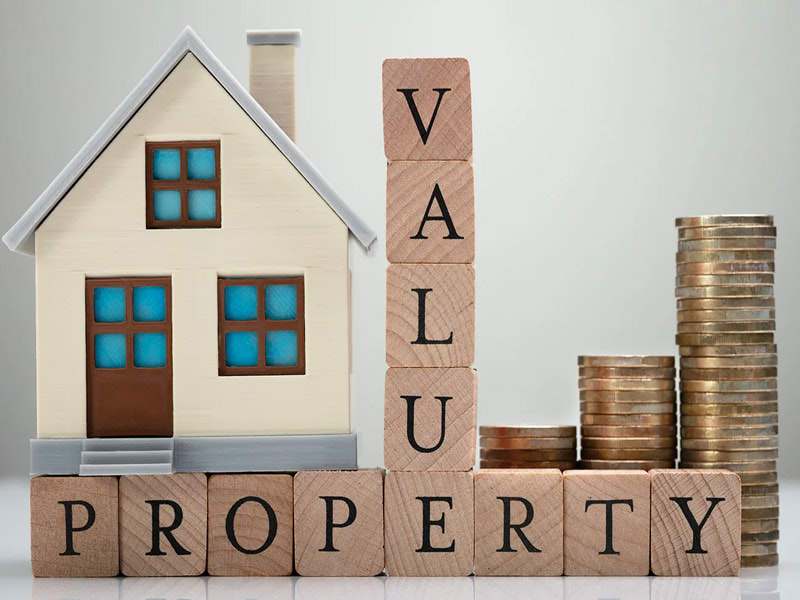Table of content
- Is a mortgage and a home loan the same?
- Can you sell a house without having paid off a mortgage?
- 1. What is mortgage discharge?
- What is mortgage discharge for Queensland?
- What if the value of your house is less than the amount you owe?
- What options do I have besides selling when facing negative equity?
- 2. What is Substitution of Security?
- 3. Is it possible to transfer a mortgage to another person?
- What does a bridging home loan entail?
- Steps to selling a home with a mortgage
A significant part of Australians sell their houses every 10 years, despite the fact that the average length of a new mortgage is about 25-30 years. Simply put, most Australians sell their homes with a mortgage.
In this article, we’ll discuss everything you need to know to sell a property with a mortgage without any issues.
First, it is important to understand the difference between a loan and a mortgage.

Is a mortgage and a home loan the same?
Not exactly. There is a distinction between a home loan and a mortgage. A home loan refers to the financial assistance obtained for purchasing a home when one lacks the necessary funds, while a mortgage acts as a guarantee for the loan and safeguards the lender against non-payment.
It’s important to understand that the property title includes the mortgage as it represents the lender’s legal stake in the property. By holding the mortgage, the lender has the right to take legal action to recover their funds if you fail to make repayments and default on the loan. This could potentially involve selling your property.
However, when you sell a property that still has an active mortgage, the lender relinquishes their ability to sell it. To safeguard their interests in such situations, it is necessary for you to settle the entire outstanding mortgage amount, referred to as a discharge of mortgage, on the settlement day when the property is transferred to the buyer.

Can you sell a house without having paid off a mortgage?
When selling a house while still having an outstanding mortgage, there are essentially three approaches to consider:
- Mortgage Discharge: This involves settling the full amount of your mortgage when the property is sold. By doing so, you clear the mortgage completely and no longer have any financial obligations towards it.
- Substitution of Security: This option allows you to transfer your existing mortgage to a new property you intend to purchase. It can be beneficial if you want to maintain the terms and conditions of your current loan, such as interest rate and repayment structure.
- Mortgage Transfer: In certain cases, it may be possible to transfer your mortgage to another person. This can occur when someone else assumes responsibility for the remaining mortgage payments, effectively taking over your loan.
To determine the most suitable option for your situation, it’s important to familiarize yourself with these choices and take advice from a finance broker or speak to the Lender directly. When you list your home for sale and begin your search for a new property, it’s advisable to discuss your preferences with your lender. They can provide guidance and information on the specific procedures and requirements involved in each option.

1. What is mortgage discharge?
A mortgage discharge occurs when the mortgage that secures your home loan is removed from the property’s title after you have fully repaid the loan. To initiate the mortgage discharge process, you will need to complete a mortgage discharge or release form, which releases the mortgage lien on your property that was used as security for your home loan.
When preparing to sell your home, it is usually essential to arrange for the discharge of your mortgage prior to the settlement. The discharge process typically takes around two to three weeks, so it is important to initiate it early during the settlement period. This is important to keep in mind, as one of the common problems is when you do not have time to deal with one mortgage before taking on a new one.
Once you have submitted your discharge of mortgage application, the lender will communicate with your solicitor or conveyancer and make arrangements to be present at the settlement. During the settlement, they will collect any outstanding amount owed to them from the sale proceeds. Subsequently, the lender usually registers the discharge of mortgage at the Land Titles office in your respective State or Territory, signifying that they no longer hold any interest in the property.
It is common to encounter fees associated with the mortgage discharge process, such as a discharge fee and, if applicable, break costs for fixed-rate loans. Some lenders may also charge an early repayment fee if you pay off your home loan within the initial three to five years. These fees are typically deducted from the funds obtained from the sale.
Apart from the lender, there are other entities that will receive funds from the proceeds of the home sale. You will typically need to settle any outstanding rates, and utility fees, and pay fees to your solicitor or conveyancer as well as the real estate agent involved in the transaction. After these payments, the remaining balance will belong to you.
If you do not plan to buy another property, the remaining funds will usually be transferred to your bank account. However, if you are purchasing a new property and have coordinated a simultaneous settlement, the funds will be allocated toward the purchase price of your new home. In situations where additional funds are necessary, you may need to secure a new home loan. In this case, the lender will place a mortgage on the new property and retain the certificate of title as collateral.
What is mortgage discharge for Queensland?
Typically, a discharge fee for a mortgage ranges from $275 to $325, although the actual amount may vary. It’s worth noting that certain states may impose an additional fee known as a “release of mortgage” fee. In the case of Queensland, you should check with the title’s office to see what their current charges are.

What if the value of your house is less than the amount you owe?
When the outstanding balance on your mortgage exceeds the value of your home, it is referred to as negative equity.
Negative equity can occur if you purchased the property at the peak of the real estate market and prices have since declined, or if you initially paid too much for the property and insufficient time has passed for equity to accumulate.
Selling a property under these circumstances is not ideal. Unlike selling a home for more than what you owe, the proceeds from the sale will not be sufficient to cover the outstanding balance on your mortgage. In these circumstances, we recommend that you do not sell your property without first seeking the written approval of the Lender to do so and then again seek the written approval of the Lender of the terms of the proposed contract/offer made by the buyer.
If there is negative equity, whilst the lender may approve the sale, to bridge the gap, your lender may require you to utilize your savings or even sell other assets. They may also review your bank statements to ensure you are not spending beyond your means.
If you are unable to provide the necessary funds, your lender will involve their mortgage insurer. Upon the sale of the property, the lender will recover the owed amount from the proceeds, while the mortgage insurer will cover the shortfall.
Subsequently, your debt obligation will be transferred to the mortgage insurer, who will initiate the process of recovering the outstanding amount from you or any guarantors associated with the home loan.
What options do I have besides selling when facing negative equity?
If you find yourself in a situation of negative equity due to a decline in property values, it is advisable to postpone selling until the market recovers and property prices improve.
During this period, it is beneficial to proactively reduce your mortgage by making additional contributions whenever possible. It is also advisable to refrain from utilizing your mortgage funds, as it is advantageous to keep your outstanding balance as low as feasible.
However, if you are contemplating selling because you are experiencing difficulties in meeting your mortgage repayments, it is crucial to reach out to your lender first and inquire about potential financial assistance options.
Banks and lenders comprehend that major life disruptions such as job loss, injury or illness, divorce, or the death of a loved one can significantly impact your ability to meet mortgage obligations. For this reason, they have specialized teams that can offer assistance and support in such circumstances.

2. What is Substitution of Security?
Loan portability, also known as substitution of security, enables you to transfer your current mortgage from one property to another. Depending on your financial situation and the policies of your lender, you may have the option to pay a nominal fee in order to transfer the outstanding balance of your existing mortgage from the property you are selling to the new property you are purchasing. This allows you to maintain the same interest rate and other terms of your original loan for your new property.
In order to proceed with loan portability, you might need to adjust the size of your loan or provide additional funds. However, if you are purchasing a less expensive property compared to the one you sold, you may receive a portion of the sale price as a refund or simply reduce the loan balance accordingly. To explore this option further, it is advisable to have a discussion with your lender or mortgage broker to obtain more detailed information and guidance.

3. Is it possible to transfer a mortgage to another person?
It is indeed possible to transfer a mortgage to another individual if the terms of your mortgage agreement allow for it to be “assumable.” In such cases, the new borrower can pay a flat fee to assume the existing mortgage and take over the responsibility for the loan.
However, it’s important to note that transferring a mortgage is not always a straightforward process. While it may be advantageous for the buyer, it is typically less favorable for the lender. This is because the new borrower could assume an older loan with lower interest rates compared to current market rates. Additionally, assuming an existing mortgage often allows the buyer to avoid paying the typical closing costs associated with obtaining a new loan for a property. These factors contribute to the buyer’s interest in assuming old loans, but they also explain why many lenders may be hesitant to facilitate such transfers.
What does a bridging home loan entail?
A bridging home loan is typically an interest-only loan that has a specific duration. It remains in effect until you sell your current home or for a maximum period of six months, whichever is shorter. During the bridging loan period, you are usually not required to make substantial ongoing repayments.
Instead, the interest on the bridging loan accumulates until the loan is settled. This accrued interest is then incorporated into the loan for your new property, increasing your total balance.
Over time, you gradually repay the interest accumulated during the bridging period through higher ongoing mortgage repayments.

Steps to selling a home with a mortgage
- Notify your lender: Submit the discharge form to your lender, informing them of your intention to repay the loan early. It is recommended to provide at least a month’s notice before the intended settlement date, as lenders typically take around 2-4 weeks to process such requests.
- Arrange sale proceeds: Your conveyancer will handle the distribution of sale proceeds to the relevant parties involved. The lender will deduct their fees from the overall sale figure.
- Notify Land Titles office: The lender will inform the appropriate Land Titles office that they no longer hold any interest in the property, indicating the discharge of the mortgage.
- Discuss future mortgage plans: If you intend to obtain another mortgage for your next property, consult with your broker to explore your options. If you decide to continue with the same lender, it is advisable to submit your mortgage application early to streamline the process.
To sum up, the sale of a house with a mortgage is the case when the transaction is almost always carried out with the participation of a convening solicitor, because. too much can go wrong in the closing process, and creditors are not always on the other side.
If after reading this article you still have any questions, you can contact us via email or call us at 1300 185 636, it’s free of charge.


